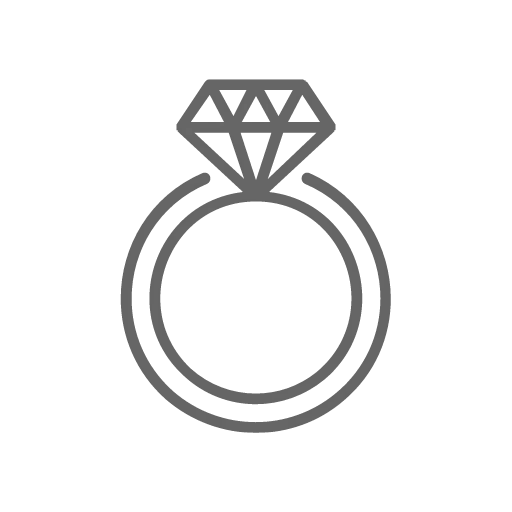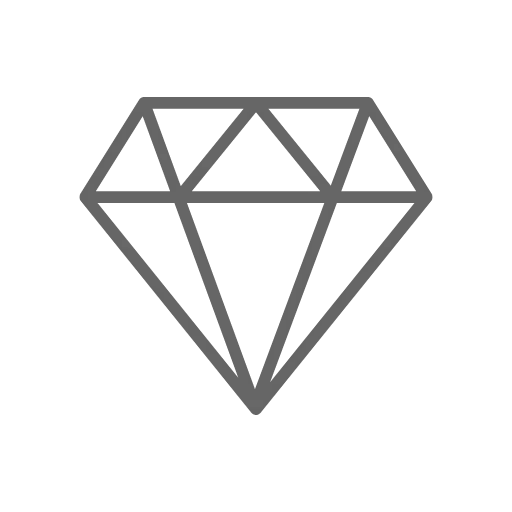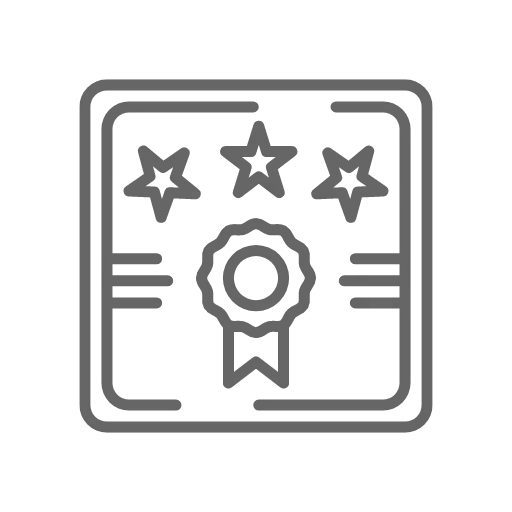A Guide to Buying the Right Diamond
When you choose to purchase a diamond for someone, you're making a statement about how much they mean to you. Buying a diamond is a major purchase, both in terms of finances and details. With so many details that go into rating a diamond, changing even one of them can drastically change the cost of the final piece.
Buying a diamond online has become a common practice, as customers can get an idea of what details mean the most to them. However, with all of the information available online, it can be easy to become overwhelmed if you don't know what you're looking for in your search.
Luckily, the four C's are a diamond buyer's best friend. These factors can determine what aspects of the diamond should be a priority and where you might want to sacrifice in order to stay within budget.
Here is your Guide to Buying the Right Diamond
Cut
Many people are surprised to learn that the cut of a diamond is one of the most important factors when buying a diamond, because the cut and shape you desire for your diamond determines where you can consider cutting back without sacrificing the look of the diamond.
A round brilliant cut is one of the most expensive options for multiple reasons. Many brides picture a round cut for their diamond engagement ring, because it is a classic look. A round diamond also appears larger than any other diamond cut, so the demand will be much higher as a result. Second, a round cut results in far more facets than other cuts, which means more light entering the diamond. The better the cut of the more brilliance it has.
A round diamond needs to have a cut of Very Good or higher for maximum brilliance, but a fancier cut can still achieve clarity and brilliance with a grade of Good or higher, which can potentially lead to some savings. Only about two percent of diamonds can achieve an Ideal cut which is a triple excellent stone. Ideal cut means it has an excellent cut polish, and symmetry. They are perfectly cut diamonds.
Clarity
For most people, clarity is the next most important thing to consider, and before you start your search for the right diamond, you should know that almost every diamond you consider will have some slight flaws. Less than one percent of all diamonds meet the clarity standards of Flawless (FL) or Internally Flawless (IF), and these stones fetch some of the highest prices on the market simply because they're so rare.
But that's OK, because the standards for a Flawless diamond are a lot higher than what the average person would consider flawless. There's a wide range of clarity grades between Flawless and Included, with the latter grade coming when flaws can be picked up by the naked eye. Most of the diamonds you consider from reputable diamond experts in Nashville will have flaws that are only visible under a microscope.
That's why many diamond buyers opt to purchase VVS1 (Very Very Slightly Included), VVS2, VS1 (Very Slightly Included) or VS2 diamonds. These four grades of diamond are all considered "eye-clean" meaning you won't be able to see any flaws with the naked eye. Dropping from VVS1
(which has so few flaws they can't be seen under a 10x microscope) to a VS2 (which is flawless to the naked eye but shows small flaws when magnified) can save you money without any noticeable difference in the quality of your diamond. Once you've determined the cut you want, the trick when buying a diamond is to find the lowest clarity that you still consider beautiful and valuable, and build your purchase from there.
Color
Not all diamonds are truly colorless, only the best ones. But as with clarity, different grades of color can drastically affect both the value and appearance of your diamond. A diamond that earns a grade of D is truly colorless, while E and F diamonds also fall into the colorless classification. However,depending on the cut of the diamond, you can go as low as a H-I color before most people start to notice a yellowish tinge on your diamond, so one strategy for your color preference is to go one grade above the grade that doesn't appear colorless to you.
When you're thinking about color, however, you won't just be thinking about the stone. Color has a lot to do with the setting of the piece and the color of the band, because a yellowish diamond can still look colorless when it's set against the right metal. That's why you should only choose color when you've had a chance to see the stone with the setting you'd like, because yellow gold, rose gold and white gold can potentially alter the look of a stone when light hits it.
If you're buying the diamond for someone who loves the look of yellow gold, you can probably go to the I-J grade and even K depending on the cut, which gives off a faint yellow color. Against a yellow gold band, the diamond will look as colorless as a higher grade. At the other end of the spectrum, if you're choosing white gold or platinum, you shouldn't even think about going lower than a J grade for your color. Instead, you should probably go a grade or two higher to ensure maximum beauty for your diamond with its setting.
Carat
Carats are simultaneously one of the most well-known measurements of a diamond and one that almost everyone gets wrong. Carats actually have nothing to do with the size of a diamond, but instead measure its weight. That's why two diamonds of the same carat can appear to be two completely different sizes, because the cut can completely change the appearance of the diamond without affecting the overall weight.
Heavier diamonds are far less common, so they're going to be more expensive than a diamond with fewer carats. A two-carat diamond can be anywhere from two to four times the cost of a one-carat diamond, so you'll have to decide if the larger size is worth the extra costs. If the person who will be wearing the diamond really wants a larger diamond, be ready to sacrifice in one of the other areas in order to stay within your budget, depending on the budget of course. Conversely, if they'd be just fine with a small diamond, you can save in that area and shift your budget toward the details they really care about.
The Fifth C: Certification
This one isn't always necessary when buying a diamond from a reputable jeweler, because they'll be more than happy to discuss the details about your diamond. Any reputable jeweler will also give you an appraisal with your purchase which details all the specifics about the diamond. When you pick up your piece from a trustworthy jeweler, you'll have all the information you could want about your diamond and irrefutable proof that it's a real diamond from a documented source.
But not all people use reputable jewelers, so these people need an independent jeweler or laboratory to confirm the history of the diamond and verify that it's a natural diamond. That's one big reason to build up a relationship with the diamond experts and gemologists at Green Hills Diamond Brokers in Nashville. With a prior GIA senior diamond grader on staff, they will never steer you in the wrong direction.
The Right Information
When you're buying a diamond, the most important information to have is the taste and style of the person who will be wearing the finished piece. The last thing you want is to purchase a diamond and then learn that they really would have been happier with higher clarity, or a different cut, so it's important to know exactly what matters most to that person. Once you have that information, buying the right diamond is as easy as connecting with the trusted diamond experts at Green Hills Diamond Brokers in Nashville and letting them know what you're looking for, what kind of budget you have in mind and what your non-negotiables are for the purchase. They will maximize your budget to its fullest potential.







